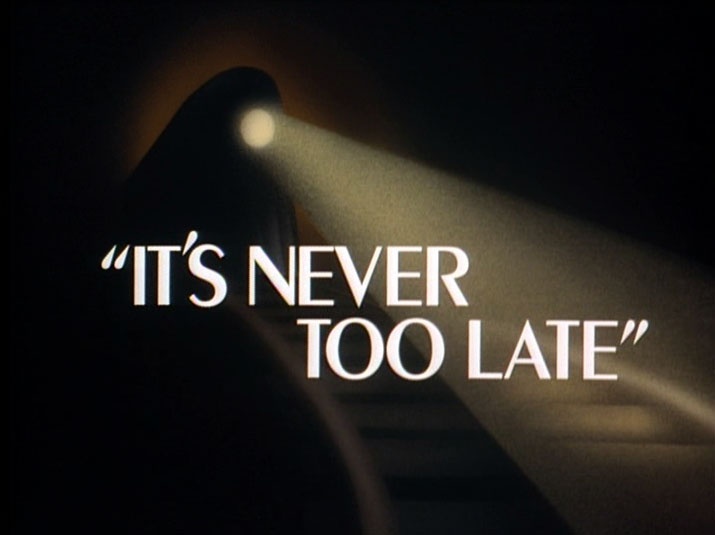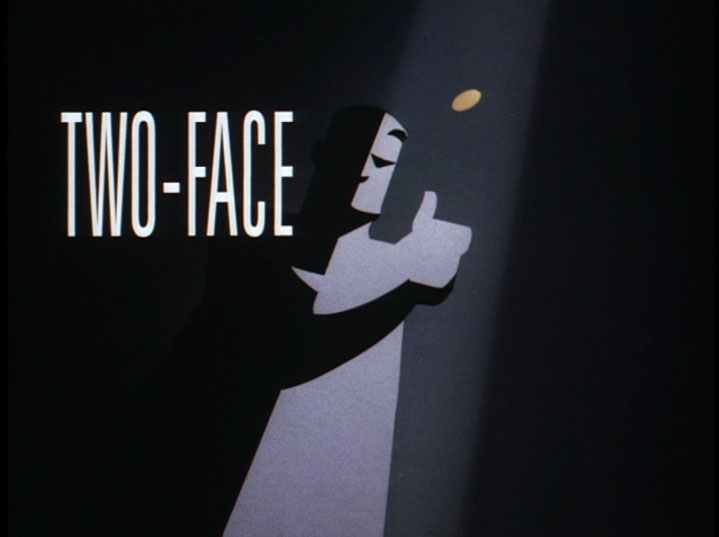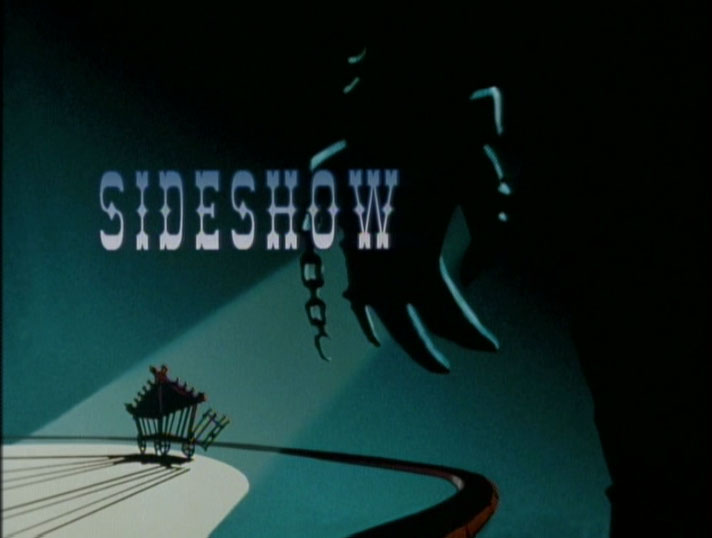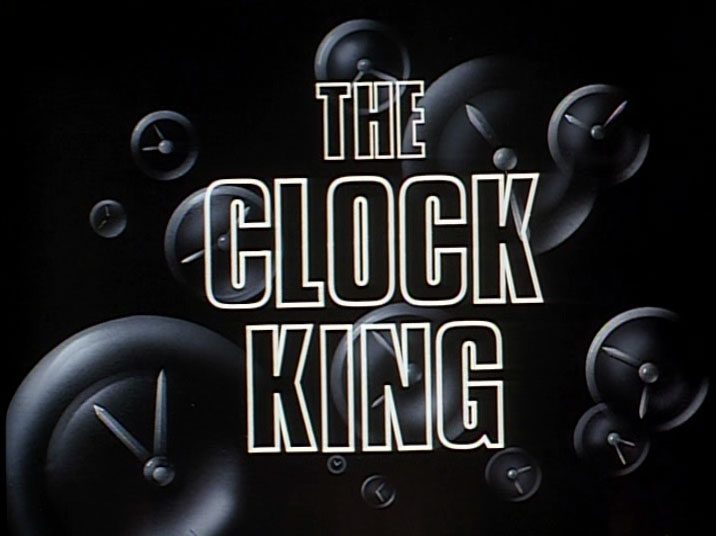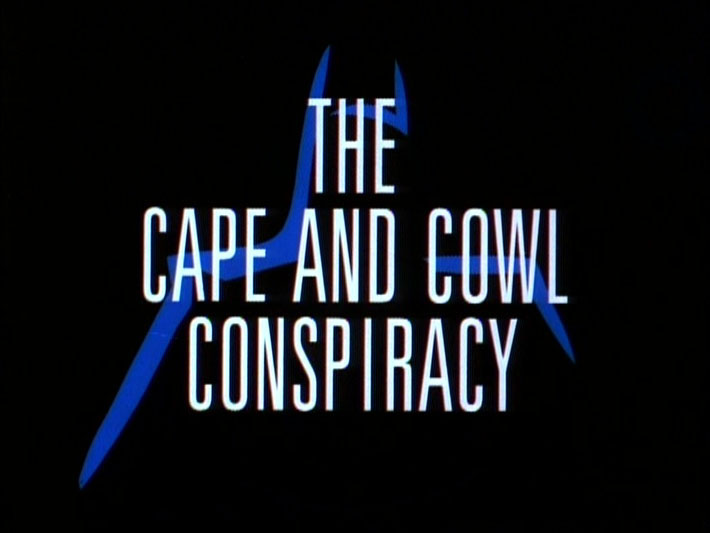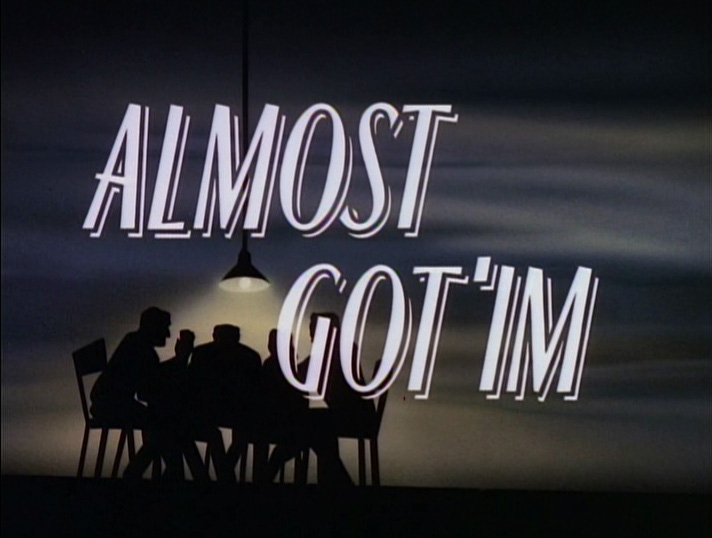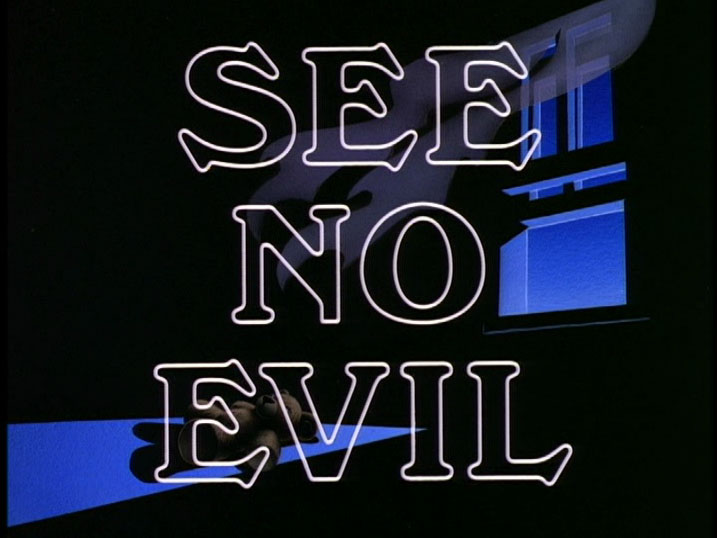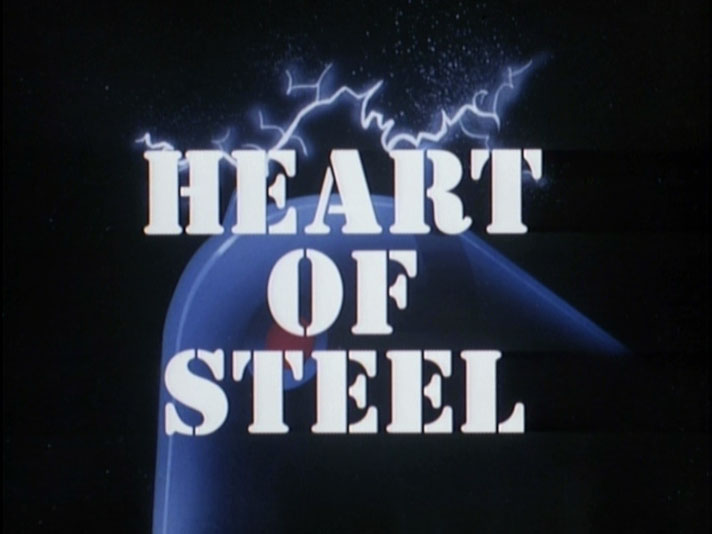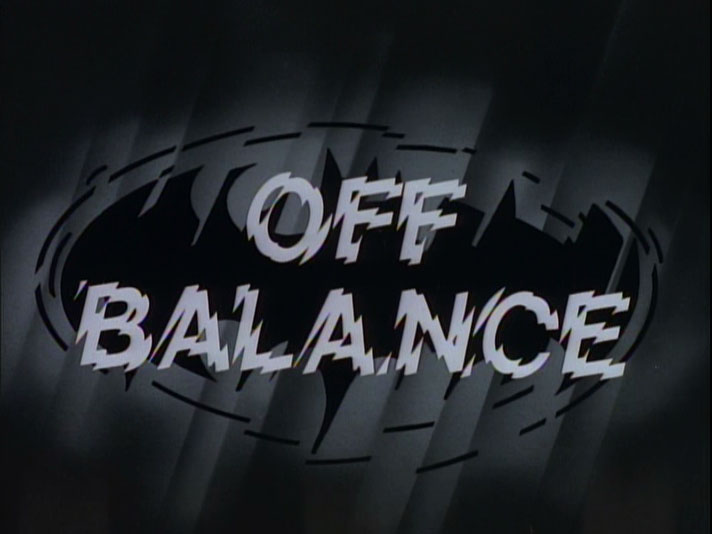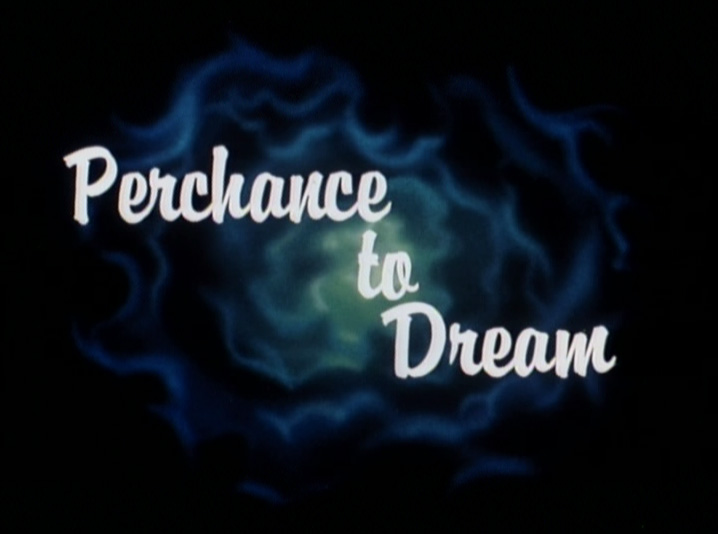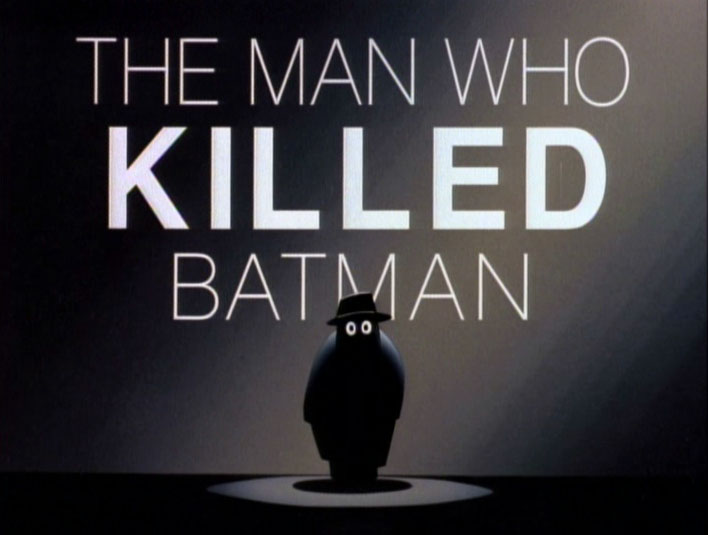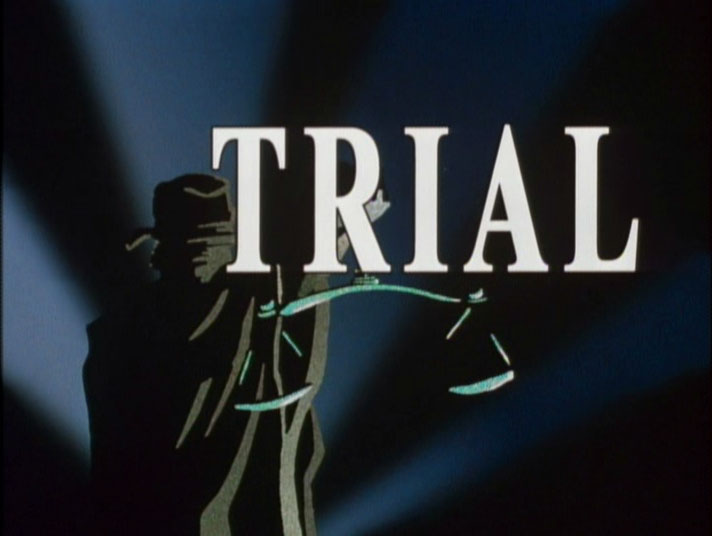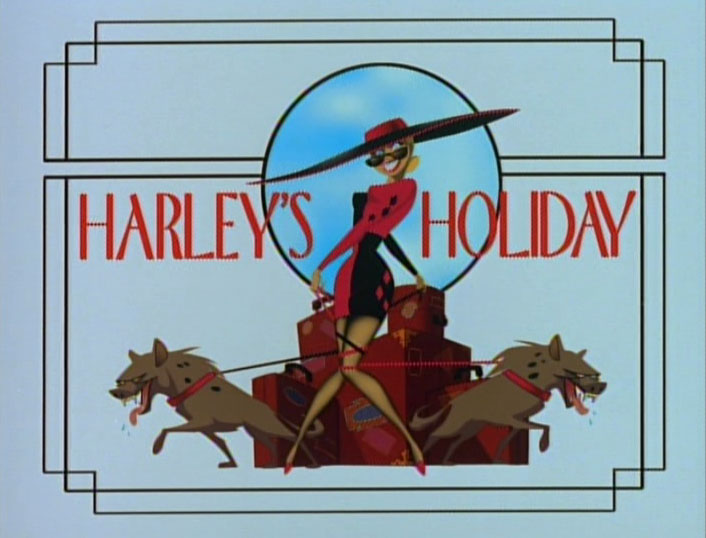A couple of months ago I recommended films for fans of Batman comics, so I figured this time I’d suggest some TV shows. Once again, I tried to think of different types of connections, including shows with resourceful, anti-gun action heroes (McGyver), super-detectives with a dark, eccentric supporting cast (The Pretender), mind-bogglingly intricate traps (Mission: Impossible), atmospheric horror and science fiction (The Twilight Zone, The X-Files, Black Mirror), bizarre rogues that are both frightening and grotesquely amusing (Twin Peaks, The League of Gentlemen), self-contained suspenseful and psychological tales (Alfred Hitchcock Presents), and even obvious parodies (Darkwing Duck). There’s also some show called Gotham that everyone keeps telling me about…
But at the end of the day, there is no getting around it: I just can’t ignore Batman: The Animated Series (BTAS).
 Co-created by acclaimed producer (and amazing artist) Bruce Timm, BTAS distilled the essence of the best elements of the Batman universe into their purest form. The Dark Knight was a cool, well-adjusted hero, sometimes working together with a likeable, teenage Robin (Dick Grayson). Most villains had a tragic origin story and sooner or later tried – and mostly failed – to reform, thus appearing as nuanced characters that usually mirrored one or more aspects of Batman himself. BTAS also featured what is arguably the best rendition of Gotham City, setting it in a time that never was, the future as imagined in the 1940s: art deco buildings, zeppelins in the sky, advanced computers alongside TV sets that still played black & white, ’90s motorbikes and Depression-era newspaper boys sharing the same streets…
Co-created by acclaimed producer (and amazing artist) Bruce Timm, BTAS distilled the essence of the best elements of the Batman universe into their purest form. The Dark Knight was a cool, well-adjusted hero, sometimes working together with a likeable, teenage Robin (Dick Grayson). Most villains had a tragic origin story and sooner or later tried – and mostly failed – to reform, thus appearing as nuanced characters that usually mirrored one or more aspects of Batman himself. BTAS also featured what is arguably the best rendition of Gotham City, setting it in a time that never was, the future as imagined in the 1940s: art deco buildings, zeppelins in the sky, advanced computers alongside TV sets that still played black & white, ’90s motorbikes and Depression-era newspaper boys sharing the same streets…
Along with the stylish animation, every technical detail was just right, from the sound to the casting to the freaking credits’ font! The writing started off as effective and – the occasional misstep aside – soon moved on to excellent: BTAS delivered thrilling bat-and-mouse games between the Caped Crusader and the rogues while also exploring themes such as obsession, empathy, recidivism, and trust. The storytelling approach varied, ranging from straightforward tales like Mad as a Hatter, which elegantly took a simple premise and allowed it to escalate until a twisted conclusion, to more experimental narratives like Dreams in Darkness, which was built around the flashbacks and hallucinations of a Bruce Wayne gradually descending into madness (thanks for the lifelong childhood trauma, guys).
My aim here is not to give a simple list of favorite episodes (aka a list of practically all the episodes written by Paul Dini) nor is it to provide in-depth analysis of BTAS (I could never be as insightful as Steven Padnick or as comprehensive as the folks at World’s Finest, from whom I took the stills below). The purpose of this post is to guide Bat-fans who are still more or less unfamiliar with the show to episodes that may speak directly to their specific tastes…
If you want to see Batman in crime stories:
In P.O.V., Detective Bullock and police officers Wilkes and Montoya tell their superiors different versions of a sting operation gone wrong. The fun is not just in putting the narrative puzzle together, but in how each tale illuminates its narrator’s character. Bullock persistently lies to cover up his recklessness and to justify his dislike of Batman. Wilkes’ narration betrays his own admiration for the Dark Knight by describing him as a supernatural figure. Montoya gives an honest account of what happened, humbly acknowledging her shortcomings while also diplomatically picking holes in Bullock’s version of events. Leave it to the BTAS to do a Citizen Kane/Rashomon homage on a kids’ show, especially in the pre-Pulp Fiction era when this kind of non-linear storytelling had not yet become as commonplace as it is today.
Not only does “It’s Never Too Late” flawlessly mimic the look and feel of 1930s gangster sagas and 1940s film noir, it also borrows from those genres tropes such as estranged brothers, mobsters, priests, a war between crime families, a blown up Italian restaurant, some poverty row-like social drama, plenty of mob slang, and a couple of ingenious flashbacks. What is more, the plot keeps throwing the viewer one twist after another until the final emotional payoff. The only way this thing could get any more legit old school crime drama would be if Humphrey Bogart and John Garfield had come back from the grave to make voice cameos!
Someone is out to get Bullock, so he enlists Batman for help – what you get is not exactly a buddy cop comedy, but there is still plenty of fun to be had in watching these two characters grudgingly play off of each other. Sure, it may seem too easy to go with a clear-cut adaptation of a comic by Chuck Dixon, whose writing is already as cinematic and as peppered with hardboiled dialogue as they come. That said, even for fans of the original, A Bullet for Bullock is pure delight. Almost 20 years on, it can still hold its own next to the millions of cop shows on television for sheer style and tight plotting. Also, the story’s resolution shows Gotham City at its deranged best.
If you like the psychological elements of the rogues’ gallery:
This reimaging of Two-Face’s origin includes a great scene where Harvey Dent undergoes hypnosis in a shadowy room. The rain builds up outside and a flash of lightning lights up half of Dent’s face, briefly foreshadowing the transformation to come as his voice and expression begin to reveal the monster inside him. The atmosphere then grows increasingly tense as Harvey starts trashing up the place and threatening his psychologist at the sound of thunder before finishing on a typically melancholic note. Man, Two-Face is the show at its moodiest.
Read My Lips brings Scarface to the screen, proving once and for all that he is one of the most disturbing Gotham rogues. A doll warehouse is the suitably eerie setting and a jazzy soundtrack evokes the speakeasies that inspired the gangster’s looks and accent. The direction is full of neat touches, with Batman emerging from shadows, windy blinds, and steam that rises from the street. And crucially, Joe R. Lansdale’s teleplay perfectly captures how downright sinister Scarface can be, right until the final, cruel shot. Talk about frayed ends of sanity, folks!
Although the BTAS’ take on Killer Croc isn’t always the most sophisticated (or the quirkiest), Sideshow really packs a punch. Batman chases his reptilian foe into the wilderness and we get a closer glimpse of Croc’s soul when he finds shelter among a band of secluded circus freaks. Shoving Croc into Denny O’Neil’s and Neal Adams’ deservedly classic story ‘A Vow from the Grave’ while throwing out the original’s murder mystery plot, this episode is full of mesmerizing sequences of the two protagonists facing each other away from the Gotham turf, out of their element, in the middle of nowhere, exposing who they are at their core.
If you enjoy ingenious set pieces, including creative capers and escapes:
Appropriately for a story about a villain obsessed with time, The Clock King’s plot has the precision of a wristwatch mechanism as Batman has to match wits with someone as good at planning as he is. Also, and at the risk of sounding too alliterative, there is a beautiful balance of pathos and puns – and it all culminates with a formidable face-off at a giant clock that is at once suspenseful and symbolic.
Elliot S! Maggin reworked his 12-page story from Detective Comics #450 into this episode where Batman has to face one sadistic deathtrap after another, building up to a keen twist ending. The Cape and Cowl Conspiracy brings a great comic to life on the screen, and it even manages to provide an alternative solution to the wax museum challenge that is just as clever as the original one was.
The Joker, Two-Face, Poison Ivy, Killer Croc, and the Penguin play poker while exchanging stories about how they nearly killed Batman. Almost Got’Im doesn’t get a single beat wrong: not only does it have the wittiest dialogue of any episode in the show, its direction is masterful – from the opening shots of each player’s hands to the timing of Catwoman’s perfect closing line.
If you’re looking for kick-ass action:
Perhaps ironically, Batman fighting an invisible man makes for some seriously awesome visuals. The icing on the cake is that See No Evil is also emotionally complex, since the villain, for once, is not so much an outlandish rogue with a megalomaniac plan but an average crook with common motivations who ultimately engages in a sadly recognizable crime. The scene with Batman desperately clinging to the top of a speeding invisible car cracks me up every time, especially the reaction of a nearby bum: ‘I didn’t know he could fly, too.’
Despite resorting to one cliché too many, you have to admire the Heart of Steel two-parter for ticking so many boxes: there are high stakes, a 1950s paranoia vibe, weird-looking sci-fi gadgets, out of control A.I., creepy clones, and a handful of violent proto-deaths, not to mention a pre-Batgirl Barbara Gordon… and the sequel, His Silicone Soul, is even more intense!
Off Balance sees Batman go off against Count Vertigo, which ushers in some freaky, distorted sequences. The episode gets away with a few cheesy lines and even the odd stodgy animation bit, not least because it gets the James Bondian feel it is going for just right, especially with the introduction of the mysterious, foreign-sounding Talia al Ghul. More importantly, in the best Batman tradition, it includes some truly neat moments of heroes overcoming physical challenges by figuring out a logical loophole in their trappings.
If you like your Batman stories with a twist:
Bruce Wayne wakes up to find out that all is right with the world after all and his life as Batman was but a dream. Perchance to Dream is a great example of taking what could have been just a plot gimmick and turning it into a meaningful statement about the Dark Knight, thematically rich and topped with one of the show’s most heartbreaking denouements.
The notion of Batman accidently getting killed by a common thief would be an intriguing premise in itself, but the fact that said thief is basically 1970s Woody Allen really nails it. What makes The Man Who Killed Batman so great is that we get to keep our batcake and eat it too: despite the title, any viewer knows that sooner or later the Caped Crusader will turn out to be alive and ready to continue kicking butt for at least the remaining episodes of the season. What the story lacks in suspense, though, it pays back in entertainment value as we are treated to the reactions of the criminal underworld to Batman’s odd demise. The Joker’s hilarious funeral service is a high point, with the Clown Prince of Crime showing sadness at losing his straight man, anger at having been beaten to the punch, and, finally – because, no matter what even beloved writers say, the Joker is nothing if not adaptable – just happily moving on.
The Caped Crusader is put on trial by Arkham Asylum’s inmates as the new D.A. grapples with Gotham City’s unconventional guardian and dysfunctional criminals. Trial gets some laughs out of the rogues’ wacky role-playing, but it also adds to the show’s overarching interrogation of Batman mythology. Watch out for some nice high-contrast animation in the sequence where the lights go out.
And if you just want to have some good old fashioned fun in Gotham City:
When Harley Quinn is released from Arkham Asylum, she gets involved in a screwball crescendo worthy of Howard Hawks, to the point that she finds herself being simultaneously chased by the Dynamic Duo, an angry Bullock, and a fish truck driven by a mobster in boxer shorts. Oh, and a freaking tank! Harley’s Holiday may not be the deepest episode, even if a dark subtext about Harley Quinn’s psychology is looming under every slapstick gag… This is not even the best Harley-centric episode – that would be Harlequinade… But this sure is the show at its most hilarious and damn it if the final scene isn’t at once funny, tragic, and heartwarming.
NEXT: More cartoons.


